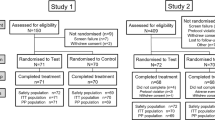Abstract
Data sources
Medline (via Pubmed), Embase, Web of Science, CENTRAL (The Cochrane Library), and the Chinese Biomedical Literature Database. Search strategy was limited to articles published in English and Chinese. No restriction applied to date of publication and a supplemental manual search was conducted by reviewing the reference lists for related paper and articles. Grey literature was also searched in ClinicalTrials.gov, the National Research Register, OpenGrey and the WHO's international clinical Trial Registry Platform.
Study selection
Randomised controlled trials in humans with DH that compared topical CSPS in any modality and any concentration to a negative (placebo) control. The primary outcome was the DH pain response to routine activities or to thermal, tactile, evaporative or electrical stimuli, and the secondary outcome was the side effect of CSPS use including discomfort, oral hygiene deterioration or dental staining.
Data extraction and synthesis
Study selection, data extraction and risk bias assessment were carried out in duplicate by two calibrated reviewers. Any disagreement was resolved via discussion after consulting a third reviewer. Mean differences (MDs) and standard deviations (SDs) were used to summarise data in studies with continuous outcomes. Heterogeneity was assessed using the I2 test. Meta-analysis was performed when similarities were found among the included studies. The Grading of Recommendations Assessment Development and Evaluation (GRADE) System's Profiler was used to assess the quality of the body of the evidence.
Results
Eleven trials were included comparing CSPS with a negative control. Four articles that focused on post-periodontal therapy were extracted as an independent analysis group. CSPS was used in topical administration with concentrations ranging from 2.5%-15%. Follow-up times ranged from 15 days to eight weeks. DH pain was elicited by tactile, evaporative or thermal stimuli. A 10 cm visual analogue scale (VAS) was the most commonly used for measurements. Five studies revealed a low risk of bias, one study had a high risk of bias and five studies had an unclear risk of bias. Seven of the studies were regarded as having a potential conflict of interest.
For the primary outcome (DH) Subjects in the DH group (four studies) showed that toothpaste containing 5% CSPS was favoured compared with a negative control at almost every time point, however one study did not report a significant difference between these treatments at two weeks.
The results from the from the grey literature (two studies) did not show significant differences between the CSPS and control groups and the results were not in agreement with the other studies.
Another study observed effects of both 2.5% and 7.5% CSPS-containing toothpaste: 7.5% CSPS was more effective at relieving DH than a negative control, whereas no significant difference was found between 2.5% and the negative controls.
For the secondary outcome (adverse events): six studies did not observe adverse reactions. The remaining studies reported minor adverse events, although most were not orally related.
Toothpaste containing 5% CSPS versus negative control: the 5% CSPS-containing toothpaste showed a better desensitising effect at both two and six weeks regardless of the applied stimuli (evaporative, two weeks: MD = −0.68; 95% CIs = −1.15, −0. 20; I2 = 59%; evaporative, six weeks: MD = −1.69; 95% CIs = −1.86, −1.52; I2 = 42%; thermal, two weeks: MD = −0.59; 95% CIs = −1.33, 0.14; I2 = 84%; and thermal, six weeks: MD = −1.70; 95% CIs = −2.17, −1.23;I2 = 72%). The quality of evidence was categorised as 'moderate'.
Prophylaxis paste containing 15% CSPS versus negative control: prophylaxis paste containing 15% CSPS showed a better desensitising effect on post-periodontal therapy DH pain than a negative control, immediately after prophylaxis and at four weeks, as determined using evaporative or tactile stimuli, and the results showed relatively low heterogeneity (evaporative, immediate: MD = −0.87; 95% CIs = −1.23, −0.51; I2 = 0%; evaporative, four weeks: MD = −0.93; 95% CIs = −1.11, −0.75; I2 = 41%; tactile, immediate: MD = −9.59; 95%CIs = −12.17, −7.01; I2 = 55%; and tactile, four weeks: MD = −8.34; 95% CIs = −10.87, −5.80; I2 =0%). The quality of evidence was classified as 'low'.
The two studies that assessed patients' self-assessments of dentine sensitivity were not pooled because of clinical heterogeneity.
Conclusions
The majority of the studies included in the review found that sodium phosphosilicate was more effective than negative control at alleviating dentine hypersensitivity, used either as toothpaste to alleviate DH or as a prophylaxis paste to treat post-periodontal therapy DH. The review found moderate quality of evidence that 5% CSPS-containing toothpaste is effective for use as an at-home treatment to relieve DH. There is low quality evidence that prophylaxis paste containing 15% CSPS is favoured over a negative control at reducing post-periodontal therapy hypersensitivity. It remains unclear whether concentrations of more than 5% CSPS have increased risk of side effects. The results are based on a small number of clinical trials. Seven of the studies were industry or partially industry-sponsored.
Similar content being viewed by others
Commentary
Dentine hypersensitivity (defined by a short sharp pain that originates from exposed dentine in response to a stimulus) is a clinical oral health problem that has been demonstrated to affect 25%-46% of 18-70 year olds. Several approaches have been formulated for DH therapy ranging from over the counter dentifrices to in-office topical desensitising agents.
The authors of this review have used an appropriate methodological approach to research the effectiveness of calcium sodium phosphosilicate as a therapeutic agent for treating DH. The search resulted in eleven articles of clinical trials that implemented dentifrices comparing 2.5%-15% CSPS to a negative control, of which six were included in the meta-analysis. Statistically significant results were found for the 5% CSPS concentrations in response to thermal stimuli at two and six weeks follow-ups. Particularly at the six week follow-up there was a large magnitude of effect compared to the placebo which would indicate a high probability of clinical significance. Forest plots for 5% CSPS in response to evaporative stimuli, as well as 15% CSPS (used for post-periodontal therapy) favoured the therapeutic agent, but suffered larger confidence intervals and higher heterogeneity.
The authors were able to conclude with limited confidence that 5% CSPS-containing toothpaste is effective for use as an at-home treatment to relieve DH. There was less confidence in the level of evidence that dentifrices containing 15% CSPS reduced post-periodontal therapy hypersensitivity. Additionally, it remains unclear from the enclosed studies if high CSPS concentrations (greater than 5%) carry a greater risk for negative sequelae such as gingival inflammation.
It should be noted that the authors felt that the quality of evidence suffered due to seven of the 11 studies being industry funded. Although this does not intrinsically discredit each study, industry funding can lead to publication bias where only results favouring therapy are published.
The use of low concentration CSPS (<5%) could be implemented with low-moderate confidence to relieve DH. However, CSPS is only one of many interventions for DH including potassium-, stannous fluoride- and arginine containing toothpastes. All of which have been reported to be effective, to varying degrees, for treatment of DH. A prudent provider would have to assess from multiple potential options what would be the best therapeutic agent for their patient. More studies are required to find a definitive solution for at-home treatment of DH.
Despite the statistically significant results provided by the meta-analysis, the clinical applicability remains uncertain (most of the studies are comparing CSPS to a negative control). We should be conscious to include in our decision-making the importance of cost, as well as the effectiveness for reducing dentine hypersensitivity and the evaluation of side effects.
Author information
Authors and Affiliations
Additional information
Address for correspondence: Li Huang, Department of Oral Sciences, Nanjing Stomatological Hospital, Medical School of Nanjing University, Nanjing, China. E-mail: Lihuang76@nju.edu.cn
Zhu M, Li J, Chen B, Mei L, Yao, L, Tian J, Li H. The Effect of Calcium Sodium Phosphosilicate on Dentin Hypersensitivity: A Systematic Review and Meta-analysis. PLoS One 2015; 10: e0140176. Doi:10/1371/journal.pone.0140176.
Rights and permissions
About this article
Cite this article
Freda, N., Veitz-Keenan, A. Calcium sodium phosphosilicate had some benefit on dentine hypersensitivity. Evid Based Dent 17, 12–13 (2016). https://doi.org/10.1038/sj.ebd.6401148
Published:
Issue Date:
DOI: https://doi.org/10.1038/sj.ebd.6401148



